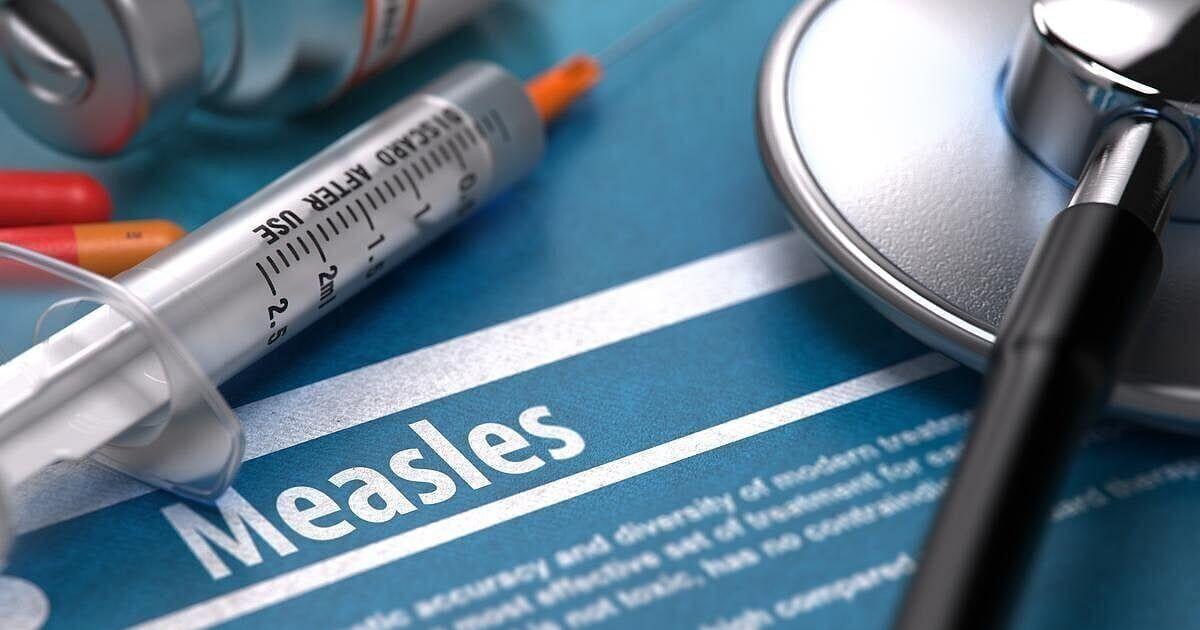As the ongoing measles outbreak continues to spread across the country, infecting hundreds of children, state officials say the disease will likely cross Nebraska state lines soon, making the need for vaccinations greater than ever. The highly contagious virus most commonly seen in children has been spreading across the U.S.
in recent months, stemming from an outbreak in northwestern Texas that has already killed three people. Now, the disease is approaching Nebraska as cases ramp up in Kansas and Colorado, officials say. Gov.

Jim Pillen, along with officials from the Nebraska Department of Health and Human Services, emphasized Friday the importance of staying vigilant, using caution when traveling to certain areas of the country and making sure vaccinations are up to date — especially in a time when statewide vaccination rates are declining. “If we are proactive and preventative, we can make an incredible difference,” Pillen said. The latest data released by the federal Centers for Disease Control and Prevention on Friday shows there have been a total of 712 confirmed cases reported in 24 states.
Of those cases, 97% of patients were unvaccinated or could not confirm their vaccination status. Additionally, 11% of those with measles have been hospitalized, while three people, two of whom were children, have died from the disease this year. The last known case of measles in Nebraska was reported in 2017 and the last case in Lancaster County was in 1990.
In order to achieve herd immunity, meaning most people are protected from the virus, a community must maintain a vaccination rate of 95% or above. Currently, Nebraska falls below this threshold at 93.9%.
State immunization rates have been on the decline in recent years, according to Dr. Sydney Stein, the HHS state epidemiologist. Stein said the measles vaccine is “safe and remains our best protection against the measles infection.
” “Now is when we can do prevention against measles,” she said. “Now is the time to get those vaccines.” Nebraska officials plan to coordinate with local health departments and health care providers to administer testing, provide information on measles and limit the spread of the disease.
In Kansas, which has a 90% vaccination rate, the outbreak appeared to be contained to the southwestern corner of the state, according to data released by the Kansas Department of Health and Environment. As of Tuesday, Kansas had 32 known cases of the measles. Bob Rauner, the president of the Lincoln Board of Education and a former family physician of 15 years, said it’s only a matter of time before Nebraska reports it first case of measles in about eight years.
“It's coming,” he told the Journal Star. “It's probably just a matter of luck when it happens in Nebraska. “This isn't an opinion.
This is a math problem,” added Rauner, who is also the president of Partnership for a Healthy Lincoln. Measles is an airborne illness that can cause symptoms similar to a common cold such as fever, dry cough, runny nose, sore throat and inflamed eyes. It is also known for causing a skin rash comprised of large, red blotches.
The infection often occurs in 2-3 week stages, including a roughly 10-day period following exposure when a patient is infectious but there are no signs or symptoms yet. Then, patients often begin to develop a mild to moderate fever combined with several other symptoms. The rash will typically start to form on the face first before spreading across the rest of the body, usually lasting about seven days.
During this phase, fevers can spike drastically, reaching as high as nearly 106 degrees. The infection is extremely contagious and can be spread among unvaccinated children with ease. In fact, it is considered to be the most contagious virus to infect humans, according to HHS.
If someone sneezes, coughs or speaks, the infection can remain in the air for about an hour and on surfaces for several hours. While it’s highly unlikely to contract measles more than once, the virus can cause lifelong complications, including like deafness, blindness and brain damage. “Measles is a preventable disease.
Without vaccination, it can spread quickly and dangerously,” said Dr. Timothy Tesmer, the state's chief medical officer. Those most at risk include children, pregnant women and those with weakened immune systems.
If someone believes they or their child may be showing signs of measles, Tesmer recommended isolating, staying home and calling a health care professional before arriving at a hospital or emergency room to help prevent the spread. If an outbreak were to occur at a school in Lincoln, students who are not vaccinated at Lincoln Public Schools, which has a measles vaccination rate of 97.8%, would likely have to quarantine for three weeks to ensure they are not infectious, according to Rauner.
LPS requires all students to receive vaccines for several diseases, including measles, unless immunization goes against a student’s religious beliefs or if they are unable to be vaccinated due to medical conditions. “Once a kid develops measles and they're in a school, you have to assume everybody's been exposed for several days, potentially, and they're all gonna have to sit home if they're not vaccinated,” he said. Without higher rates of immunization in Nebraska, Rauner said measles will impact the community, and the outbreak likely won’t end anytime soon.
“This isn't going to stop,” he said. “It's probably going to continue for months, maybe even years, until we fix the problem, which is getting people vaccinated.”.
Entertainment

'It's coming': Nebraska officials prepare for first measles cases as outbreak spreads

Gov. Jim Pillen emphasized on Friday the importance using caution when traveling to certain areas of the country and making sure measles vaccinations are up to date.















